|
Birds
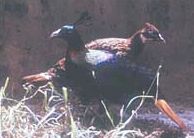 There are forty-nine species of pheasants found all over the world, of which six are found in Pakistan. These include Blue Peafowl, Kalij, Koklass, Cheer, and Western Tragopan. The Dhodial
Pheasantry near Abbottabad is one of the the largest pheasantry in Asia. The Pheasantry has been proudly able to breed "Cheer" in captivity, a bird otherwise extinct in the country. In 1997 a parent flock of 40 pairs was raised, which has doubled now. The release of Cheer, for re-introduction, has also been started. This success, has given international fame to the pheasantry.
There are forty-nine species of pheasants found all over the world, of which six are found in Pakistan. These include Blue Peafowl, Kalij, Koklass, Cheer, and Western Tragopan. The Dhodial
Pheasantry near Abbottabad is one of the the largest pheasantry in Asia. The Pheasantry has been proudly able to breed "Cheer" in captivity, a bird otherwise extinct in the country. In 1997 a parent flock of 40 pairs was raised, which has doubled now. The release of Cheer, for re-introduction, has also been started. This success, has given international fame to the pheasantry.
 In Pakistan, an estimated population of one million birds migrates during winter. Most of them land on the wetlands along the Indus River in the Sind Province. These freshwater wetlands provide suitable habitats and feeding opportunities to a wide variety of water-birds passing through Indus flyway. Nara canal with associated marshlands in Khairpur, Drig Lake in Larkana, Haleji and Keenjhar Lakes in Thatta, are some of the favourite wintering abodes of migratory water-birds. These include many species of duck family like Mallards, Pintails, Shovelers, Teals, Wigeon, Garganeys and Shelducks etc, beside Coots, Moorhens, Gallinules, Waterhen and Grebes etc. A large population of Shorebirds also reaches in coastal area of Sindh like the Curlews, Whimbrels, Godwits, Shanks, Sandpipers, Stints and Dunlin etc. Other wading birds like Flamingoes, Pelicans, Spoonbills and Ibises can also be sighted on both upcountry wetlands and on tidal estuaries along the seashores.
In Pakistan, an estimated population of one million birds migrates during winter. Most of them land on the wetlands along the Indus River in the Sind Province. These freshwater wetlands provide suitable habitats and feeding opportunities to a wide variety of water-birds passing through Indus flyway. Nara canal with associated marshlands in Khairpur, Drig Lake in Larkana, Haleji and Keenjhar Lakes in Thatta, are some of the favourite wintering abodes of migratory water-birds. These include many species of duck family like Mallards, Pintails, Shovelers, Teals, Wigeon, Garganeys and Shelducks etc, beside Coots, Moorhens, Gallinules, Waterhen and Grebes etc. A large population of Shorebirds also reaches in coastal area of Sindh like the Curlews, Whimbrels, Godwits, Shanks, Sandpipers, Stints and Dunlin etc. Other wading birds like Flamingoes, Pelicans, Spoonbills and Ibises can also be sighted on both upcountry wetlands and on tidal estuaries along the seashores.
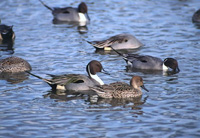 The 'Rasul Barrage Wildlife Sanctuary'. After monsoon, environs are green and this wetland is full lotus. Flocks of Siberians Cranes and Strokes and local black winged Stilts are the common winter sights in the area. Though at the dawn of a hot August day, I was able to see only few Tobas perching over their morning catch or a few flocks of Murghabis (wild ducks). The marshy Runn of Kutch and its surrounding desert area in Sindh is known to be a breeding ground for Flamingoes and staging ground for Pelicans, Cranes, Storks and many species of waterfowl.
The 'Rasul Barrage Wildlife Sanctuary'. After monsoon, environs are green and this wetland is full lotus. Flocks of Siberians Cranes and Strokes and local black winged Stilts are the common winter sights in the area. Though at the dawn of a hot August day, I was able to see only few Tobas perching over their morning catch or a few flocks of Murghabis (wild ducks). The marshy Runn of Kutch and its surrounding desert area in Sindh is known to be a breeding ground for Flamingoes and staging ground for Pelicans, Cranes, Storks and many species of waterfowl.
 People in the villages are fond of having pet birds, specially the speaking parrots, black partridges and quails etc. The much famous phrase "Mian Mitho Choori Khani Hai" (asking parrot if he wants to eat a home made sweet made from local bread, sugar and butter/desi ghee) is echoed almost everywhere when someone comes across a red beaked parrot that has a red ring around its neck. People in the villages are fond of having pet birds, specially the speaking parrots, black partridges and quails etc. The much famous phrase "Mian Mitho Choori Khani Hai" (asking parrot if he wants to eat a home made sweet made from local bread, sugar and butter/desi ghee) is echoed almost everywhere when someone comes across a red beaked parrot that has a red ring around its neck. |
Reptiles
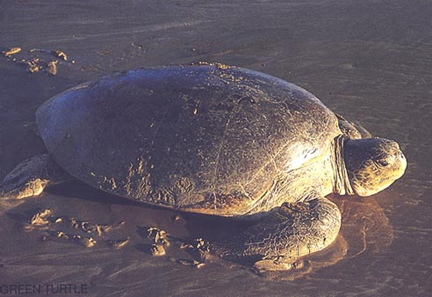 The Green Turtle is the second largest species of marine turtle family after the Leatherback turtle. It can grow up to 3.5 feet in carapace size, and could be as heavy as 180 kilogram. In Pakistan, Green Turtle nests for eggs on Sandspit and Hawksbay beaches (Karachi) throughout the year with a remarkable apex from September to January. Every year, an average of 800 nests has been observed at beaches of Karachi, besides some coastal areas of of the Balochistan province. However, the Green Turtles are facing
extinction all over the world due to low growth rate and environmental constraints.
The Green Turtle is the second largest species of marine turtle family after the Leatherback turtle. It can grow up to 3.5 feet in carapace size, and could be as heavy as 180 kilogram. In Pakistan, Green Turtle nests for eggs on Sandspit and Hawksbay beaches (Karachi) throughout the year with a remarkable apex from September to January. Every year, an average of 800 nests has been observed at beaches of Karachi, besides some coastal areas of of the Balochistan province. However, the Green Turtles are facing
extinction all over the world due to low growth rate and environmental constraints.
 The Marine Turtle Project in Pakistan is the last hope for the survival of Green Turtles in our region. Though, the population of turtles has not been increased so far, however it has been sustained to an extent that the Green Turtle can still be seen nesting at the beaches of Karachi. If the project was not there, our next generation would have never known how the Green Turtle looked like.
The Marine Turtle Project in Pakistan is the last hope for the survival of Green Turtles in our region. Though, the population of turtles has not been increased so far, however it has been sustained to an extent that the Green Turtle can still be seen nesting at the beaches of Karachi. If the project was not there, our next generation would have never known how the Green Turtle looked like.
Other Reptiles
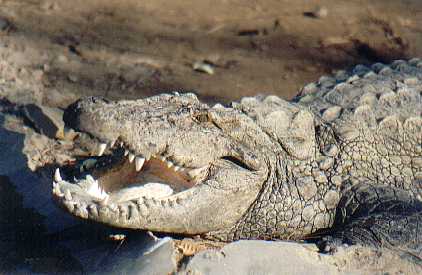 The "Gharial" or the crocodiles are found in lakes and marshes around Karachi. Manghoo Pir, shrine of a saint omce had many crocodiles in the pond inside the shrine, but now only a few are left. The Nara Desert Wildlife Sanctuary has the largest population of the endangered Mugger Crocodile in Pakistan, besides Jackal, Fox, Pangolin, Honey Badger and Wolf.
There are around 55 species of sea snakes which are found in the seas of the world but in the coastal waters of Pakistan, only 14 species have so far been recorded. Sea snakes include the group of poisonous snakes which have fangs that are fixed in front of the upper jaw. This type of fang is called Proteroglyphous. On land, poisonous snakes. Cobra and Krait, have such fangs. Another type of fang called Solenoglyphous does not exist in sea snakes as it is characteristic of Vipers. Some species include Beaked Sea Snake, Short Sea Snake, Cantor small-headed sea snake, Yellow Sea Snake etc.
|

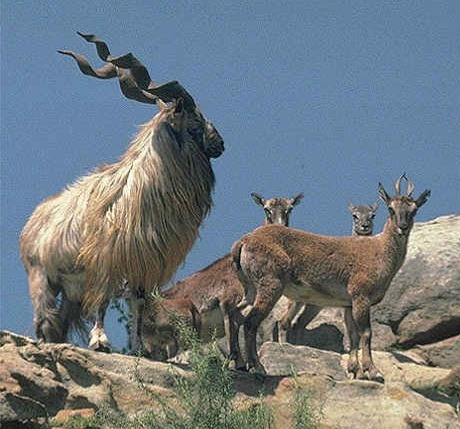
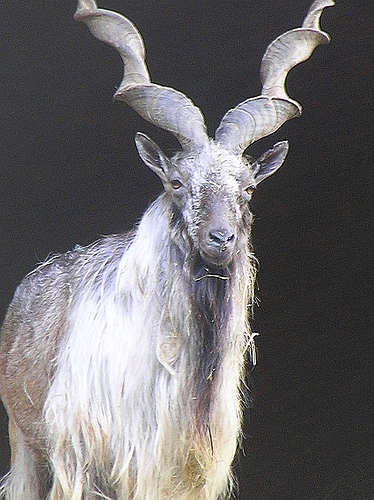
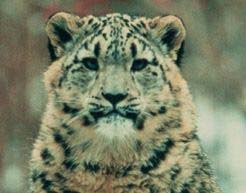 Although not as rich as the African continent, but many rare and endangered species are also found in Pakistan. Generally the wild animals in Pakistan include various varieties of deer, wild boar, bear, crocodile, rare snow leopards (left) and waterfowl. The wetlands and lakes provide natural habitat for a number of including coated otter, Indus dolphin, fishing cat, hog deer, and wild boar. During the migration season, at least 1 million waterfowl representing more than 100 species visit the extensive deltas and wetlands of Pakistan. Pakistan’s rivers and coastal waters contain many types of freshwater and saltwater fish, including sharks, mackerel, herring and shellfish.
Although not as rich as the African continent, but many rare and endangered species are also found in Pakistan. Generally the wild animals in Pakistan include various varieties of deer, wild boar, bear, crocodile, rare snow leopards (left) and waterfowl. The wetlands and lakes provide natural habitat for a number of including coated otter, Indus dolphin, fishing cat, hog deer, and wild boar. During the migration season, at least 1 million waterfowl representing more than 100 species visit the extensive deltas and wetlands of Pakistan. Pakistan’s rivers and coastal waters contain many types of freshwater and saltwater fish, including sharks, mackerel, herring and shellfish.
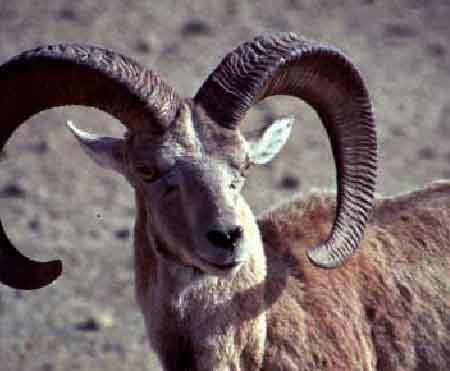
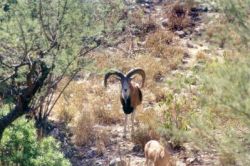
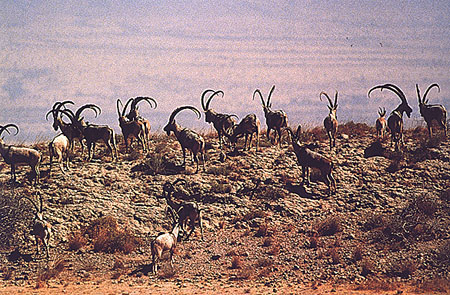

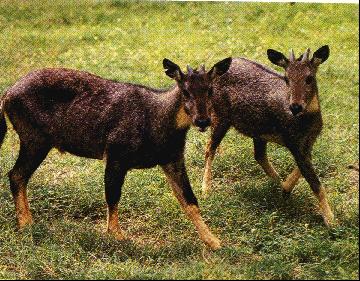
 There are forty-nine species of pheasants found all over the world, of which six are found in Pakistan. These include Blue Peafowl, Kalij, Koklass, Cheer, and Western Tragopan. The Dhodial
Pheasantry near Abbottabad is one of the the largest pheasantry in Asia. The Pheasantry has been proudly able to breed "Cheer" in captivity, a bird otherwise extinct in the country. In 1997 a parent flock of 40 pairs was raised, which has doubled now. The release of Cheer, for re-introduction, has also been started. This success, has given international fame to the pheasantry.
There are forty-nine species of pheasants found all over the world, of which six are found in Pakistan. These include Blue Peafowl, Kalij, Koklass, Cheer, and Western Tragopan. The Dhodial
Pheasantry near Abbottabad is one of the the largest pheasantry in Asia. The Pheasantry has been proudly able to breed "Cheer" in captivity, a bird otherwise extinct in the country. In 1997 a parent flock of 40 pairs was raised, which has doubled now. The release of Cheer, for re-introduction, has also been started. This success, has given international fame to the pheasantry.
 In Pakistan, an estimated population of one million birds migrates during winter. Most of them land on the wetlands along the Indus River in the Sind Province. These freshwater wetlands provide suitable habitats and feeding opportunities to a wide variety of water-birds passing through Indus flyway. Nara canal with associated marshlands in Khairpur, Drig Lake in Larkana, Haleji and Keenjhar Lakes in Thatta, are some of the favourite wintering abodes of migratory water-birds. These include many species of duck family like Mallards, Pintails, Shovelers, Teals, Wigeon, Garganeys and Shelducks etc, beside Coots, Moorhens, Gallinules, Waterhen and Grebes etc. A large population of Shorebirds also reaches in coastal area of Sindh like the Curlews, Whimbrels, Godwits, Shanks, Sandpipers, Stints and Dunlin etc. Other wading birds like Flamingoes, Pelicans, Spoonbills and Ibises can also be sighted on both upcountry wetlands and on tidal estuaries along the seashores.
In Pakistan, an estimated population of one million birds migrates during winter. Most of them land on the wetlands along the Indus River in the Sind Province. These freshwater wetlands provide suitable habitats and feeding opportunities to a wide variety of water-birds passing through Indus flyway. Nara canal with associated marshlands in Khairpur, Drig Lake in Larkana, Haleji and Keenjhar Lakes in Thatta, are some of the favourite wintering abodes of migratory water-birds. These include many species of duck family like Mallards, Pintails, Shovelers, Teals, Wigeon, Garganeys and Shelducks etc, beside Coots, Moorhens, Gallinules, Waterhen and Grebes etc. A large population of Shorebirds also reaches in coastal area of Sindh like the Curlews, Whimbrels, Godwits, Shanks, Sandpipers, Stints and Dunlin etc. Other wading birds like Flamingoes, Pelicans, Spoonbills and Ibises can also be sighted on both upcountry wetlands and on tidal estuaries along the seashores.
 The 'Rasul Barrage Wildlife Sanctuary'. After monsoon, environs are green and this wetland is full lotus. Flocks of Siberians Cranes and Strokes and local black winged Stilts are the common winter sights in the area. Though at the dawn of a hot August day, I was able to see only few Tobas perching over their morning catch or a few flocks of Murghabis (wild ducks). The marshy Runn of Kutch and its surrounding desert area in Sindh is known to be a breeding ground for Flamingoes and staging ground for Pelicans, Cranes, Storks and many species of waterfowl.
The 'Rasul Barrage Wildlife Sanctuary'. After monsoon, environs are green and this wetland is full lotus. Flocks of Siberians Cranes and Strokes and local black winged Stilts are the common winter sights in the area. Though at the dawn of a hot August day, I was able to see only few Tobas perching over their morning catch or a few flocks of Murghabis (wild ducks). The marshy Runn of Kutch and its surrounding desert area in Sindh is known to be a breeding ground for Flamingoes and staging ground for Pelicans, Cranes, Storks and many species of waterfowl.
 People in the villages are fond of having pet birds, specially the speaking parrots, black partridges and quails etc. The much famous phrase "Mian Mitho Choori Khani Hai" (asking parrot if he wants to eat a home made sweet made from local bread, sugar and butter/desi ghee) is echoed almost everywhere when someone comes across a red beaked parrot that has a red ring around its neck.
People in the villages are fond of having pet birds, specially the speaking parrots, black partridges and quails etc. The much famous phrase "Mian Mitho Choori Khani Hai" (asking parrot if he wants to eat a home made sweet made from local bread, sugar and butter/desi ghee) is echoed almost everywhere when someone comes across a red beaked parrot that has a red ring around its neck. The Green Turtle is the second largest species of marine turtle family after the Leatherback turtle. It can grow up to 3.5 feet in carapace size, and could be as heavy as 180 kilogram. In Pakistan, Green Turtle nests for eggs on Sandspit and Hawksbay beaches (Karachi) throughout the year with a remarkable apex from September to January. Every year, an average of 800 nests has been observed at beaches of Karachi, besides some coastal areas of of the Balochistan province. However, the Green Turtles are facing
extinction all over the world due to low growth rate and environmental constraints.
The Green Turtle is the second largest species of marine turtle family after the Leatherback turtle. It can grow up to 3.5 feet in carapace size, and could be as heavy as 180 kilogram. In Pakistan, Green Turtle nests for eggs on Sandspit and Hawksbay beaches (Karachi) throughout the year with a remarkable apex from September to January. Every year, an average of 800 nests has been observed at beaches of Karachi, besides some coastal areas of of the Balochistan province. However, the Green Turtles are facing
extinction all over the world due to low growth rate and environmental constraints.
 The Marine Turtle Project in Pakistan is the last hope for the survival of Green Turtles in our region. Though, the population of turtles has not been increased so far, however it has been sustained to an extent that the Green Turtle can still be seen nesting at the beaches of Karachi. If the project was not there, our next generation would have never known how the Green Turtle looked like.
The Marine Turtle Project in Pakistan is the last hope for the survival of Green Turtles in our region. Though, the population of turtles has not been increased so far, however it has been sustained to an extent that the Green Turtle can still be seen nesting at the beaches of Karachi. If the project was not there, our next generation would have never known how the Green Turtle looked like.

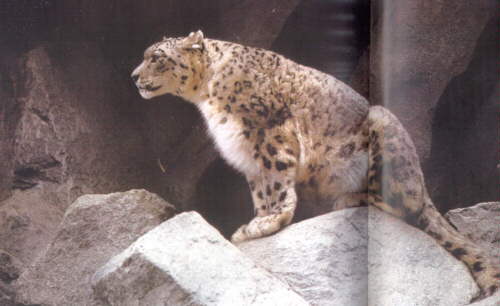 The
the total remaining population of
Snow Leopard
is estimated around 7,000-10,000 worldwide, of which around 300 are
found in Pakistan. Anyone who can venture up to Nagar Valley, 65
kilometres north of Gilgit, one has a fair chance of siting the big
cat, preferably at dawn or dusk. The Baltistan Wildlife Sanctuary
covering 415 square kilometers in Baltistan, contiguous with the
Astor Wildlife Sanctuary to its south and east and south of the
Indus River, is basically established to protect the Snow Leopard
besides Brown Bear, Lynx, Tibetan wolf, Tibetan fox, Markhor, Blue
sheep and Asiatic ibex. Recently, an animal husbandry program in
Chitral has been established which combines science to provide a new
approach to save snow leopards.
The
the total remaining population of
Snow Leopard
is estimated around 7,000-10,000 worldwide, of which around 300 are
found in Pakistan. Anyone who can venture up to Nagar Valley, 65
kilometres north of Gilgit, one has a fair chance of siting the big
cat, preferably at dawn or dusk. The Baltistan Wildlife Sanctuary
covering 415 square kilometers in Baltistan, contiguous with the
Astor Wildlife Sanctuary to its south and east and south of the
Indus River, is basically established to protect the Snow Leopard
besides Brown Bear, Lynx, Tibetan wolf, Tibetan fox, Markhor, Blue
sheep and Asiatic ibex. Recently, an animal husbandry program in
Chitral has been established which combines science to provide a new
approach to save snow leopards.
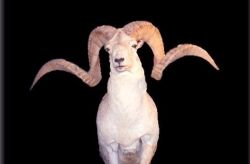 Marcopolo Sheep
is recognized by the very long outward curving horns, developed in
the mature males. An aged ram is is very impressive and majestic,
mainly because of massive spiraling horns which can span a man's
outstretched arms and almost twice the height and size of most other
wild or domestic sheep. The Marco Polo sheep is an inhabitant of
very high mountains subject to severely cold winds and climatic
conditions throughout the year. Currently, its population is
confined to northwestern part of Hunza district along the Chinese
border. Here, between spring and autumn, it occupies two sperate
valleys in the northwest section of Khunjerab National Park, and
also inhabits the Kilik-Mintaka border area, just west of the
National Park. Marco Polo sheep is probably the most endangered of
Pakistan's wild sheep and goats, and unless action is taken
immediately they will probably become extinct.
Marcopolo Sheep
is recognized by the very long outward curving horns, developed in
the mature males. An aged ram is is very impressive and majestic,
mainly because of massive spiraling horns which can span a man's
outstretched arms and almost twice the height and size of most other
wild or domestic sheep. The Marco Polo sheep is an inhabitant of
very high mountains subject to severely cold winds and climatic
conditions throughout the year. Currently, its population is
confined to northwestern part of Hunza district along the Chinese
border. Here, between spring and autumn, it occupies two sperate
valleys in the northwest section of Khunjerab National Park, and
also inhabits the Kilik-Mintaka border area, just west of the
National Park. Marco Polo sheep is probably the most endangered of
Pakistan's wild sheep and goats, and unless action is taken
immediately they will probably become extinct.
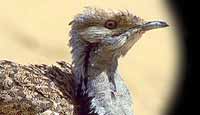 The
Houbara Bustard has been over hunted as a game bird in Pakistan and is officially protected. But despite all restrictions, some royalties of the Gulf states find it convenient to come on official trips and hunt this poor bird with falcons. In the evenings, the hunted bustards are skewered and eaten - as simple as that.
The
Houbara Bustard has been over hunted as a game bird in Pakistan and is officially protected. But despite all restrictions, some royalties of the Gulf states find it convenient to come on official trips and hunt this poor bird with falcons. In the evenings, the hunted bustards are skewered and eaten - as simple as that. 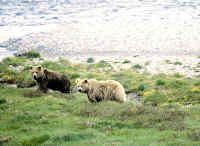 An endangered species of bear, found only in the northern areas of Pakistan, could face extinction of its already small population in a specially designated national park. The population of the
An endangered species of bear, found only in the northern areas of Pakistan, could face extinction of its already small population in a specially designated national park. The population of the